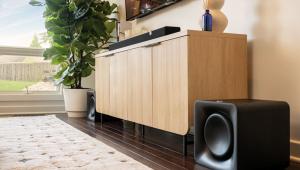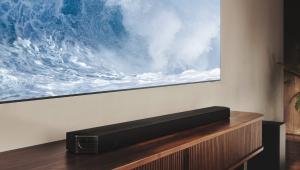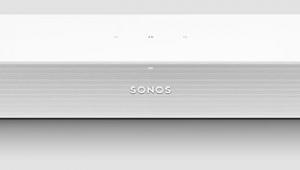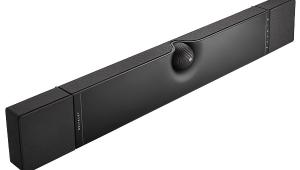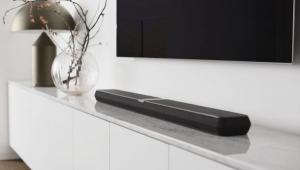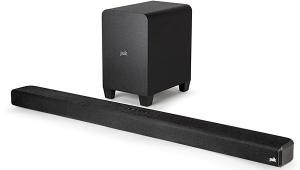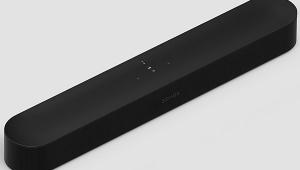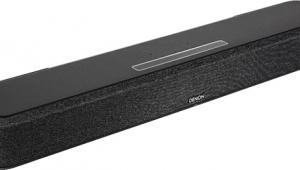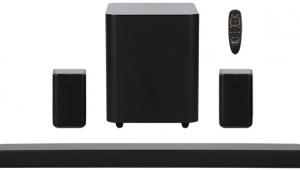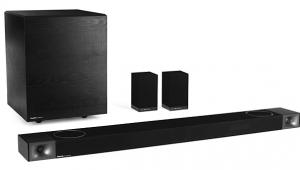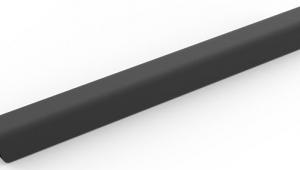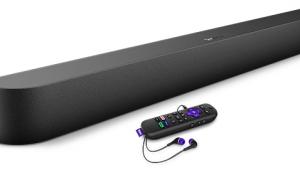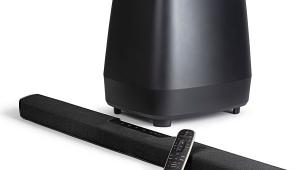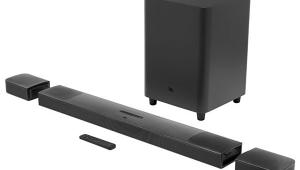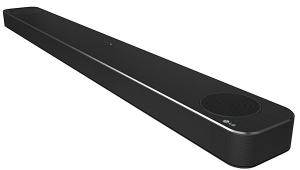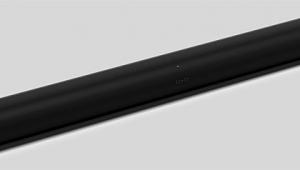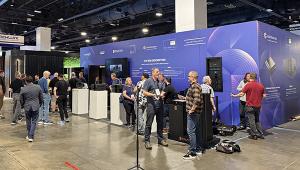A panoramic view is also proposed for multi-media, cross-scale applications to outline overview. - Review Solution
B&W Panorama 2 Soundbar System

There are some things that absolutely ooze sophistication and class—products that, even if you don’t happen to be interested in or have much knowledge of that particular sort of thing—can spontaneously elicit a feeling of admiration. For example, I’m not a big fan of high-end analog watches, yet I can’t help but respect the craftsmanship and attention to detail of a Tourneau or TAG Heuer sitting in a jewelry store’s display case. Ditto the “whatever” sentiment for automobiles. As long as it reliably gets me from where I am to where I want to be (although a nice sound system is a plus), I’m usually good with it. But I also think Tesla’s Model S all-electric sedan is to die for. Not surprisingly, the A/V world has its own share of companies that can be counted on to consistently raise an appreciative eyebrow or two. The iconic Bang & Olufsen—despite the company’s occasional forays into the realm of the bizarre—would no doubt find its way onto most people’s short list.
Another industry icon notable for the meticulous care and precision with which its products are built is Bowers & Wilkins. If you’ve ever been fortunate enough to be in the same room with a living, breathing Nautilus loudspeaker from B&W—or, perhaps, one of the company’s loudspeakers that are designed for lesser mortals, such as the B&W 800 Diamond—you’ve no doubt experienced at least a tiny tingle of awe. And that’s before the voice coils start moving. Whether or not you think the speakers are worth the price tag is irrelevant at this point. The artistry and refined workmanship are goosebumpingly undeniable on both of those speaker models.
That Magic Touch
While it wasn’t on the level of a Nautilus experience, I nevertheless had a mini-moment of marvel when the B&W Panorama 2 soundbar and an accompanying PV1D subwoofer arrived. You don’t need the included “superfine anti-static cleaning cloth” to clue you in to the fact that this isn’t another run-of-the-mill soundbar. (Nor is the PV1D just another subwoofer.) Despite its modest 44-inch width, for instance, the Panorama 2 has plenty of heft—over 31 very solid pounds of it. To say the soundbar is curvaceous is an understatement. It’s all curves, and that curvaceousness is there for more than sheer physical beauty. It’s also integral to maintaining structural rigidity and eliminating cabinet resonances. The coyly rounded front grille is made from a finely perforated black steel mesh, and it extends all the way across the front of the Panorama 2 from edge to edge. The top/back/bottom (with the cabinet’s dramatic arched design, it’s impossible to tell where one side stops and another begins) is covered by a gorgeous mirror-black stainless-steel skin. In my always-humble opinion, though, the most elegant feature of the Panorama 2 is the proximity-sensing control panel. Located along the top in the center of the front panel’s grille, it’s normally a dark, smooth rectangle (technically, it’s more of an isosceles trapezium) that visually blends in with the rest of the grille—especially when you’re sitting 8 or more feet in front of it. As your hand moves within about 3 inches in front of the panel, however, the LEDs behind the glass gracefully ramp up in brightness. Other than a single, small power button, there aren’t any traditional, tactile pushbutton controls. Instead, the totally smooth panel is pressure sensitive in various spots over the appropriate LEDs for raising and lowering volume, changing inputs, and turning the processing on and off. Once you draw your hand away, the display fades to black, leaving no annoying, distracting lights—indicating power status or volume level, for example—on the soundbar when you’re watching a movie. (Although this seems like a simple thing, it’s an important detail that other manufacturers often overlook.) The display also temporarily lights up and then fades to black whenever the remote control is used.
Tubes That Don’t Glow
At this point, it’s worth noting that the Panorama 2 is B&W’s second iteration of a soundbar. Although it looks similar, this version is more than just a spruced-up rebadge of the original Panorama. B&W has made significant updates behind the grille, among them totally new high-, mid-, and low-frequency drive units. The company says the bass drivers have improved linearity, which gives them greater dynamic range capabilities and deeper extension. The new midrange drivers have wider dispersion, and B&W claims this helps to improve the Panorama 2’s virtual surround performance. The 1-inch, aluminum-dome tweeter (no, I didn’t forget the final s to make it plural—there’s only one) in the Panorama 2 has been updated, as well, says B&W, in order to integrate more smoothly with the new midrange drivers.
As was the case in the original Panorama, the new tweeter utilizes “tapering tube” technology that’s trickled down from the otherworldly Nautilus speaker. Despite sounding like some sort of OBGYN procedure, B&W’s tapering tube technology involves slapping a gradually narrowing tube (like a funnel but not as dramatic in slope) on the back of a driver—in this case, the tweeter. Sound coming off the back side of the tweeter’s dome unsuspectingly makes its way down the tapering tube only to find that the walls are closing in on it. In a sense, it’s the reverse of how a horn-loaded driver works. Whereas the throat of the horn gradually expands and efficiently couples the sound to the surrounding air along the way, the tapered tube (along with some helpful sound-absorbing material stuffed inside) dissipates the sound down to near nothing. The end result is that those bolloxing back waves never get the chance to bounce around, hit the dome from behind, and introduce coloration. Fans of B&W’s distinctive tweeter-on-top design prominent on the PM1 bookshelf speaker and the 800 Diamond series speakers will be disappointed, but most people will be happy to know that the tapered tube attached to the Panorama 2’s tweeter is hidden inside the soundbar rather than perched on top of the cabinet.
All total, there are nine drivers inside the Panorama 2. Five of them—two 3.5-inch woofers, two 3-inch midranges, and the 1-inch tweeter—are used for the center channel. The remaining four 3-inch midrange drivers, two on each end of the soundbar, angle outward. B&W says these drivers are responsible for any sound that’s not present in the center channel. A single 50-watt Class D amplifier powers the two woofers, while five 25-watt amps are used for the other seven drivers. The system utilizes a pair of rear-firing ports for the two 3.5-inch woofers. Both ports are decked out with B&W’s Flowport technology, which could just as easily been called Golfport technology since the many dimples on the walls of the ports reduce turbulence in the air around the ports in much the same way the dimples on a golf ball reduce turbulence around it as it flies through the air.

The Ins, Outs & In-Betweens
In terms of active soundbars, the Panorama 2 is in a minority by today’s standards with its inclusion of three HDMI inputs and an HDMI output, as well as a 3.5mm minijack that can serve as an analog stereo audio input or an optical digital input. It stops short, however, in decoding only Dolby Digital, Dolby ProLogic II, and DTS, whereas some other high-end active soundbars with HDMI inputs tout DTS-HD Master Audio and Dolby TrueHD decoding and (attempted) discrete-channel reproduction. But with its HDMI switching, the B&W can clearly function as the audio hub for a complete system and guarantees that the onboard surround decoders will be working with the discrete channel information contained in Dolby and DTS multichannel Blu-ray, DVD, and broadcast soundtracks. This should yield a much better result sonically than taking the optical output of an HDTV as the single feed to the soundbar, most of which downconvert multichannel tracks to two-channel PCM stereo when they’re presented at the TV’s HDMI inputs.
- Log in or register to post comments


